Overview of the Energy System
Dr. James Doss-Gollin
Thu., Sep. 5
Announcements
- If you’re interested in attending the study abroad orientation on 9/11 at noon, please email Dr. Bedient by the end of the week.
- This is a big class. Please consider coming to office hours! (Freshmen: the sophomores have already figured this out)
Climate Change and \(\text{CO}_2\)
Today
Climate Change and \(\text{CO}_2\)
Emissions and Energy Use
Energy Sources
Electricity Systems
Wrapup
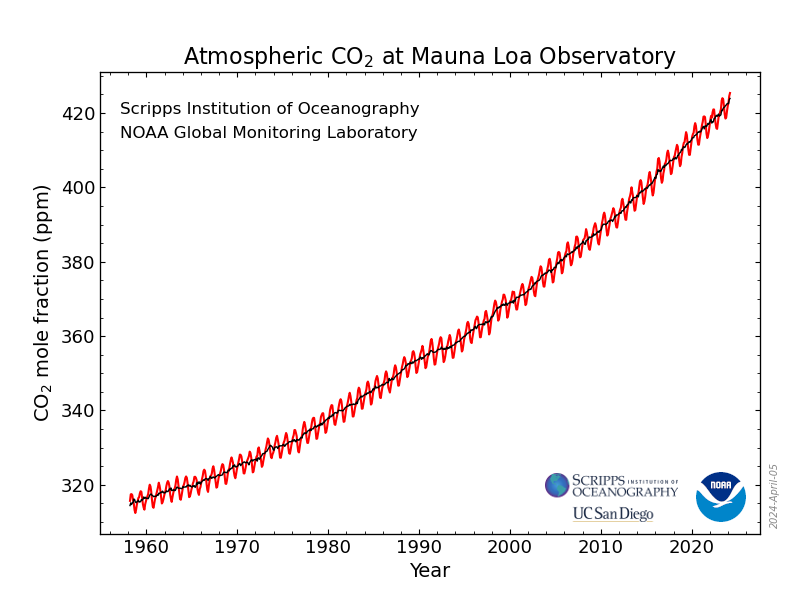
Global CO2 emissions over time at Mauna Loa Observatory, Hawaii
Emissions: rate of change
- Temperature depends on atmospheric concentration (“climate sensitivity”)
- Emissions are the rate at which greenhouse gases are added to the atmosphere
- Greenhouse gases leave the atmosphere through biological (e.g., photosynthesis) and physical (e.g., equilibrium with the ocean) processes
- Imbalance when emissions exceed sinks
Climate sensitivity
Climate sensitivity is the equilibrium change in global temperature for a doubling of \(\text{CO}_2\) concentrations.
- With no feedback effects at all, about \(1^\circ\) C
- Both positive and negative feedbacks
- Doubling CO2 leads to \(\approx 3^\circ\) C of warming (“climate sensitivity”)
- But values between 1.5 and 4.5 C are plausible
CO2 emissions over time
Emissions and Energy Use
Today
Climate Change and \(\text{CO}_2\)
Emissions and Energy Use
Energy Sources
Electricity Systems
Wrapup
Energy Sources
Today
Climate Change and \(\text{CO}_2\)
Emissions and Energy Use
Energy Sources
Electricity Systems
Wrapup
Pre-industrial energy sources
- Wood
- Other biomass
- Animal power
- Small windmills
Origin of fossil fuels
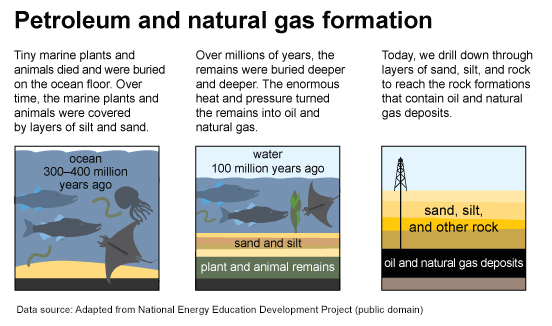
Gas
Oil
- Plants and animals die and sink to the bottom of the sea
- The plant and animal layer gets covered with mud
- Over time, more sediment exerts pressure, compressing the dead plants and animals into oil
- Oil moves up through porous rocks and eventually forms a reservoir
- Anaerobic decomposition of microorganisms (e.g., phytoplankton and zooplankton) under anoxic conditions
- Over geologically long duration, high levels of heat and pressure caused the organic matter to chemically alter into liquid and gaseous hydrocarbons
Origin of fossil fuels (cont.)
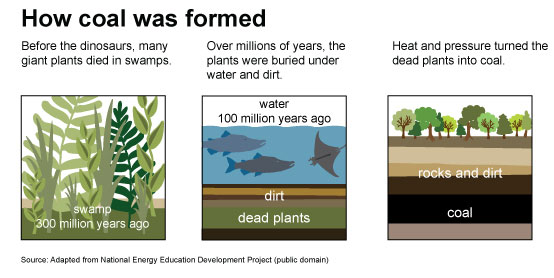
Coal
- Vegetation was gradually compressed as they get buried under soil, rising the temperature and pressure
- The plant matter was protected from biodegradation and oxidation, usually by mud or acidic water, and the dead vegetation was slowly converted, by carbonization, to coal
Global coal reserves
Global oil reserves
Nuclear

- Fission: Splitting atom nuclei releases energy
- Heat from fission boils water to create steam
- Steam drives turbines to generate electricity
- Low carbon
- Modern systems generally safe, but high upfront costs
Hydro
- Uses flowing water to generate electricity
- Water stored in dams or from rivers turns turbines
- Provides reliable baseload power
- Low carbon emissions
- Can impact local ecosystems and communities

Solar
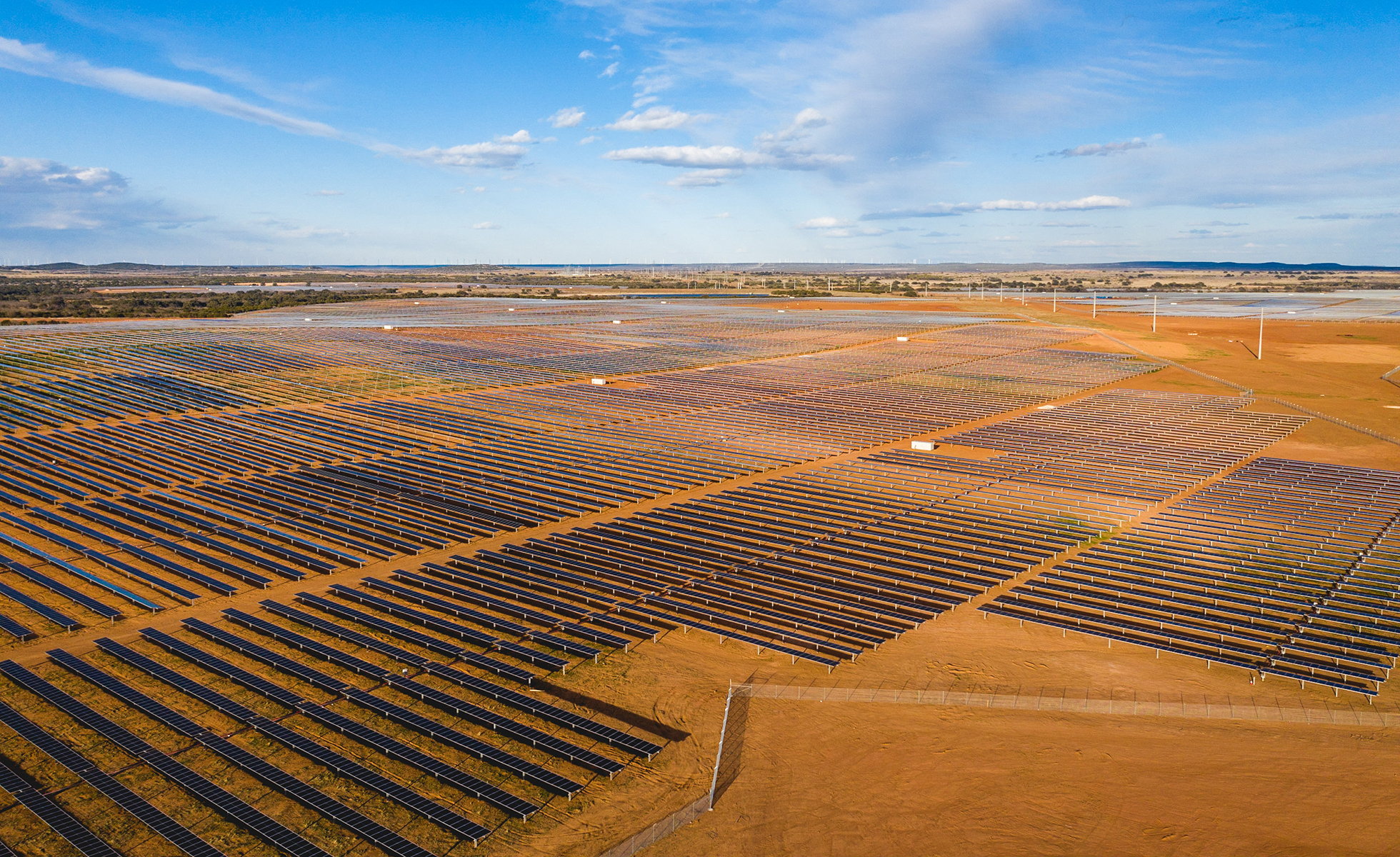
- Converts sunlight directly into electricity
- Photovoltaic cells or concentrated solar power
- Zero emissions during operation but requires land
- Rapidly decreasing costs
- Intermittent, requires energy storage solutions
Wind
- Harnesses wind energy to generate electricity
- Wind turbines convert kinetic energy to electrical
- Clean, renewable energy source
- Increasingly cost-competitive
- Variable output, dependent on wind conditions

Overview of energy system
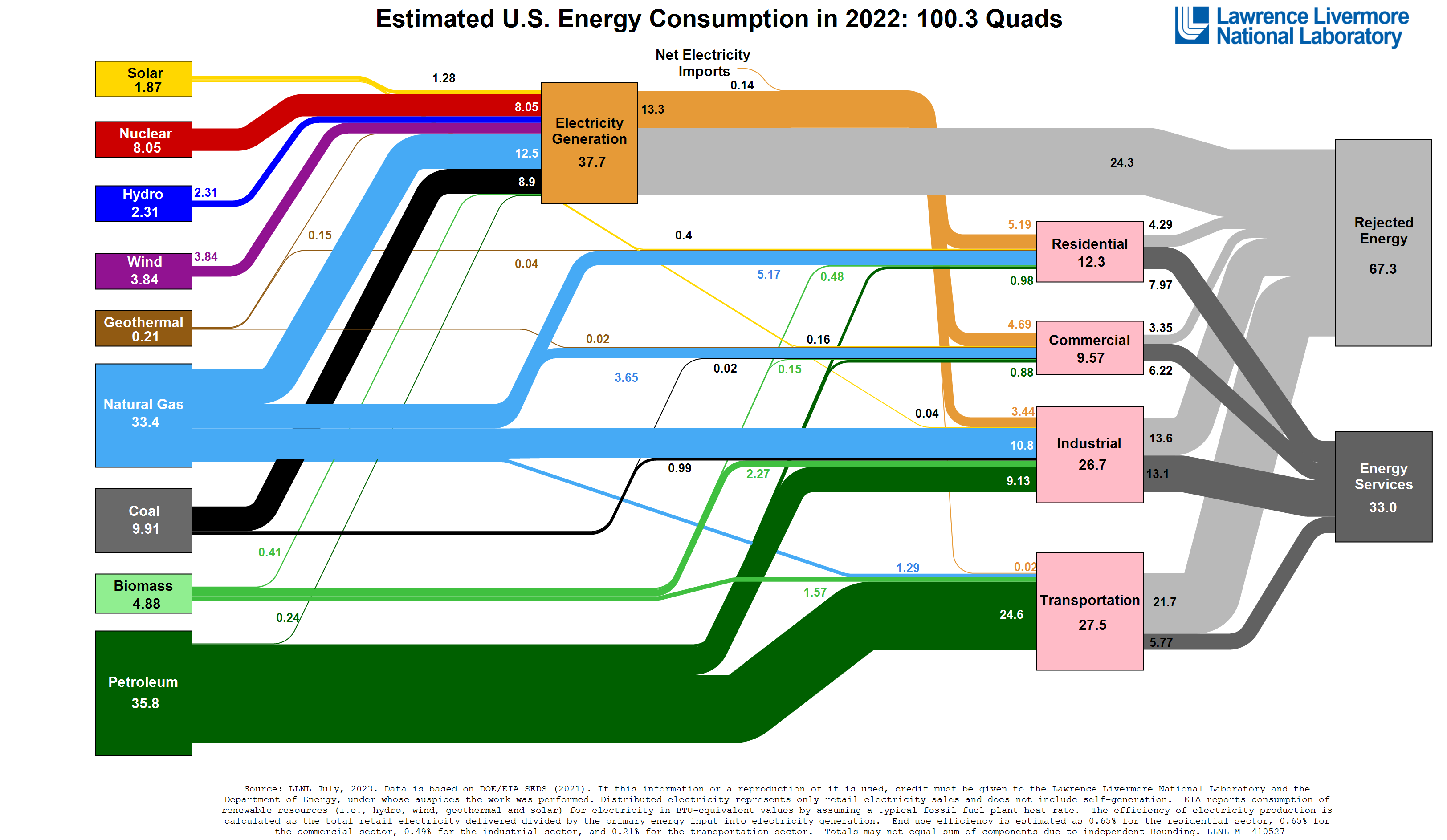
Electricity Systems
Today
Climate Change and \(\text{CO}_2\)
Emissions and Energy Use
Energy Sources
Electricity Systems
Wrapup
Electrification: Key to Mitigation
- Electrification is crucial for climate change mitigation
- Renewable electricity can replace fossil fuels in many sectors
- Enables use of clean energy sources across the economy
- Transportation: Electric vehicles
- Heating: Heat pumps
- Industry: Electric furnaces and processes
Triple renewable capacity
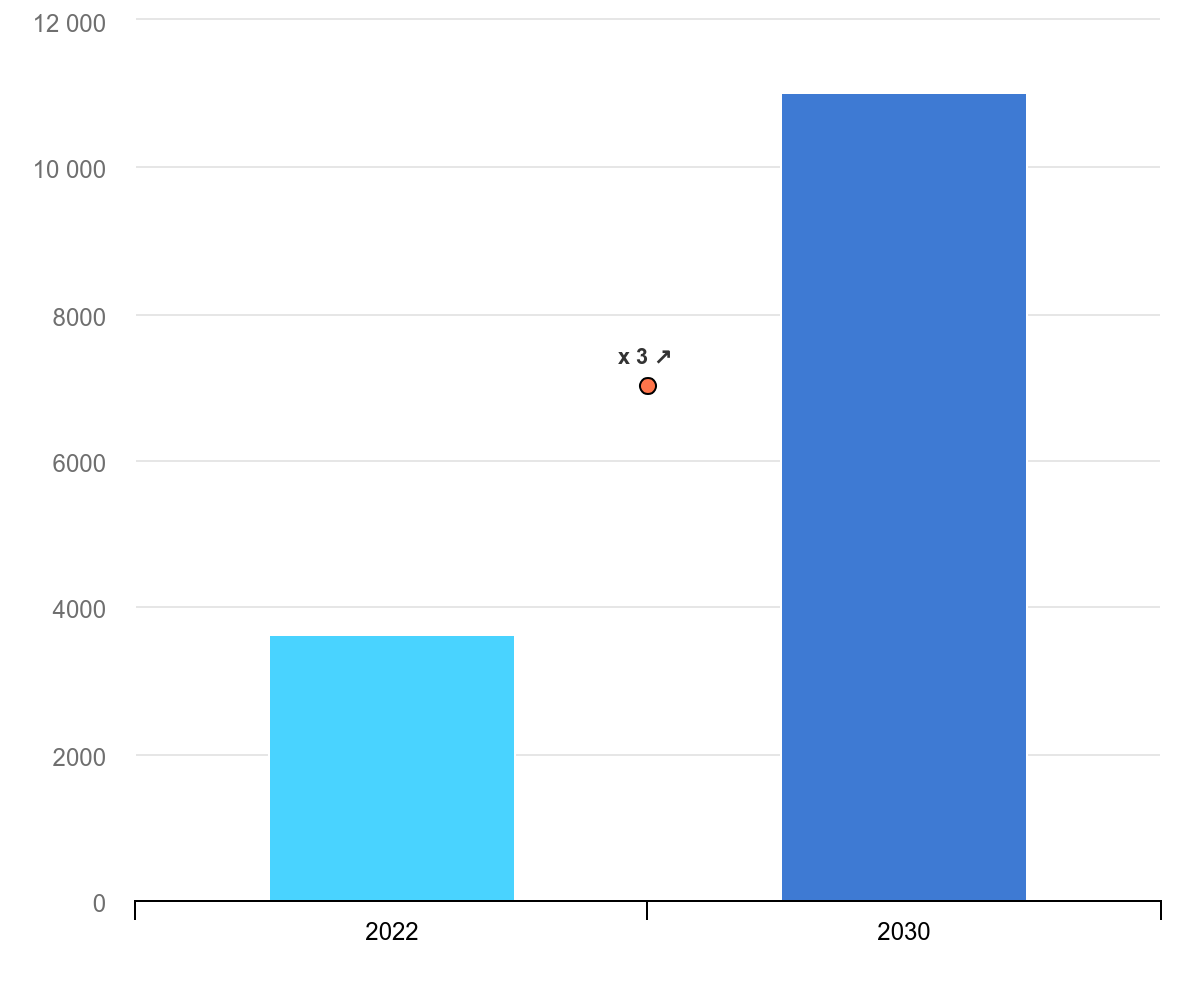
Global renewables power capacity in the Net Zero Emissions by 2050 Scenario, 2022 and 2030
Where do these estimates come from?
Example: IEA’s Net-Zero by 2050 Roadmap.
- Scenario Development : Multiple global policy and socioeconomic storylines
- Energy System Modeling : Detailed analysis of energy production, consumption, and technologies
- Integrated Assessment Models (IAMs) : Economic and emissions impacts of scenarios
- Climate Models : Temperature projections based on emissions scenarios
- Technology Pathways : Analysis of technology development and deployment
Note
Note: Most models have limited feedback from climate to economics/policy
Some definitions
- Primary energy: Total energy content of fuel before conversion
- Final energy: Energy delivered to end-users
- Efficiency in conversion and use is crucial
- Renewables replace the work done by fossil fuels, not total primary energy
- Higher efficiency of electric systems means less primary energy needed
- Example: Electric vehicles vs. internal combustion engines
Carbon intensity of electricity
Renewable energy price declines

- Solar PV module prices declined exponentially
- Learning rate for solar PV modules: 20.2%
- Price declined from $106 to $0.38 per watt (99.6% decrease)
Learning curves in renewable energy
- Solar electricity prices follow learning curves
- Learning rate for solar electricity: 36%
- Wind power also shows strong learning effects

Which is which: NY, TX, and VT?
Electricity demand variability
Electricity demand is not constant
Extreme weather impacts on the grid
ERCOT expected 14GW of power plant outages in its 'extreme' winter planning scenario. By late Monday morning, more than 30GW were offline. pic.twitter.com/6HvkEaT1en
— Brian Bartholomew ((BPBartholomew?)) February 24, 2021
Extreme temperatures drive rare peaks in electricity demand
Wrapup
Today
Climate Change and \(\text{CO}_2\)
Emissions and Energy Use
Energy Sources
Electricity Systems
Wrapup
Questions
On Canvas (here), please share at least one thing you’d like to learn more about
Project 1
See here for details
